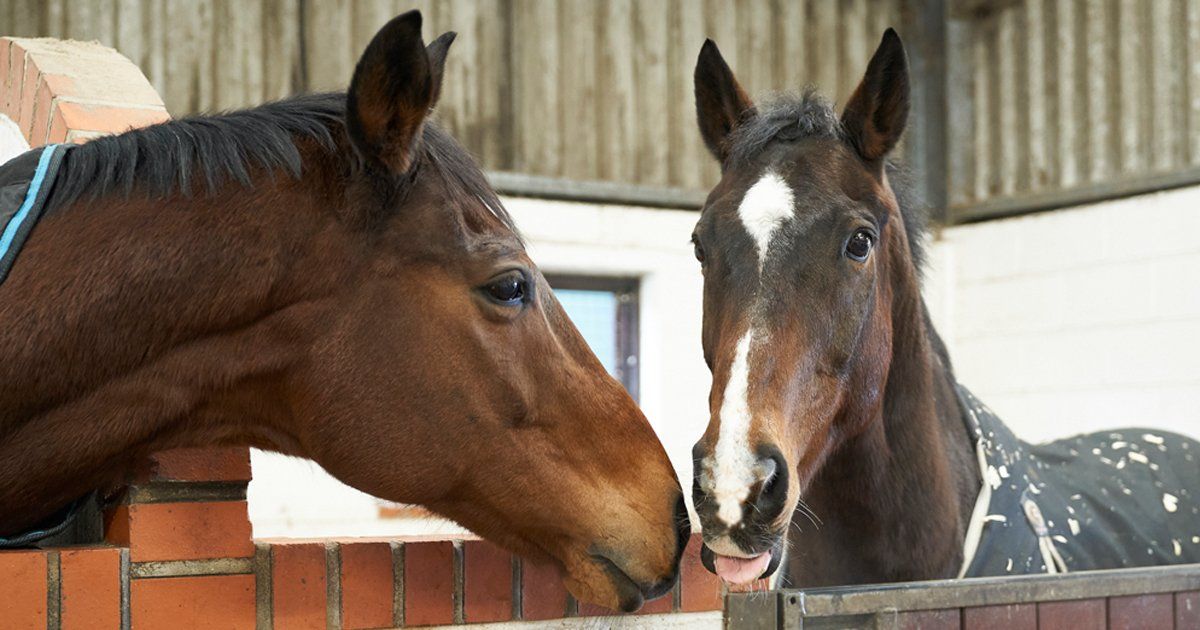
Box Rest - Making It A Good Experience
If your horse is lame or has had surgery, often box rest is prescribed for a period of time. This can be a difficult time for the horse and also for the carer/owner/handler as it is not natural in any way for a horse to stand still in a 10ft by 12ft space for any length of time. The problems that we all face when this is imposed upon our horses are:
- Massively increased tension and anxiety in the horse causing him/her to be difficult to handle and often dangerous
- Stiffening of the thoracic and cervical spine in particular and often the sacroiliac joint in the pelvis can seize up completely in a previously fit working horse
- Stomach ulcers are difficult to avoid due to the anxiety and to the lack of grazing
- Stable vices never seen before can develop very quickly.
To avoid all of the above and to give our horses the best possible time if they have to have box rest in order to heal a damaged joint or ligament, we ensure the following happens here at the centre and we do have much success at avoiding all of the above problems which can be very damaging to both horse and handler.
If walking in hand is advised, then we ensure that we take the horse to the indoor school at a quiet time and walk them on the long-reins, in order to give them something to concentrate on and to ensure that their cervical and thoracic spine is stretched properly twice per day to avoid the stiffness that will inevitably occur otherwise. This helps enormously for all to be safe, for the horse not to re-injure himself and when riding starts the rider will have a much looser, safer and happier horse to ride.
At the centre we also ensure that the horses on box rest have regular physiotherapy to move joints and muscles that otherwise would not move on box rest and to encourage healing by promoting good blood supply to all areas. It also keeps us very well informed of other problems through other parts of the body are occurring due to this unnatural state imposed on the horse.
If walking your horse from box rest twice per day is proving difficult in any way either for you, or for your horse, your Vet will give you some mild acceptable sedation which can be given orally before the walking time in order to take care of your horse’s mental health and your safety.
To avoid stomach ulcers at all times, much roughage is fed FROM THE FLOOR to ensure that the gut is kept healthy and not starved of what nature intended it to have daily. All of the above appears to ensure that few stable vices occur as the horse quickly realises that they have a routine and are kept happy in their new environment.
On Box rest the horse should be encouraged to lie down to promote healing so the weight is taken off the affected limb. Ways of achieving this is a deeper more comfortable bed, enough space in the stable, a routine where other horses are around the one on box rest but not much other activity. A calm quiet environment is helpful.
Here at the centre the transition then to riding the horse again after the healing has occurred from the lameness or the back problem has to be safe for all and with these simple steps in place, we do achieve that.
Horses on box rest should never be left alone in the stable block as they are herd animals, and should always have a companion nearby. This is very important.

Contact Us For Help
Mary and her team have a wealth of experience in this area. Call Mary on 07929 666408 to discuss your requirements and how we can help. We are based in Slinfold, near Horsham in West Sussex.
